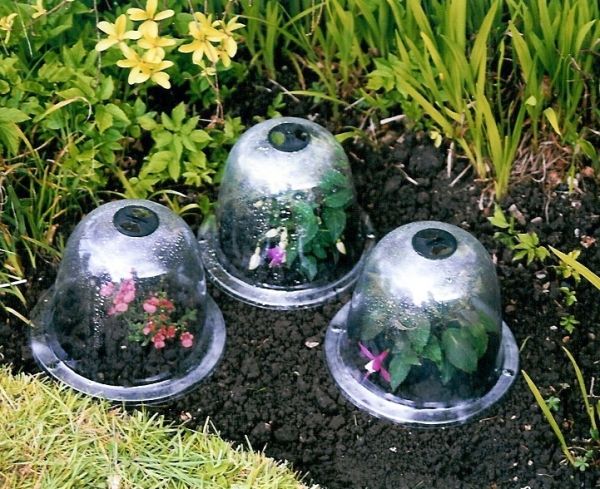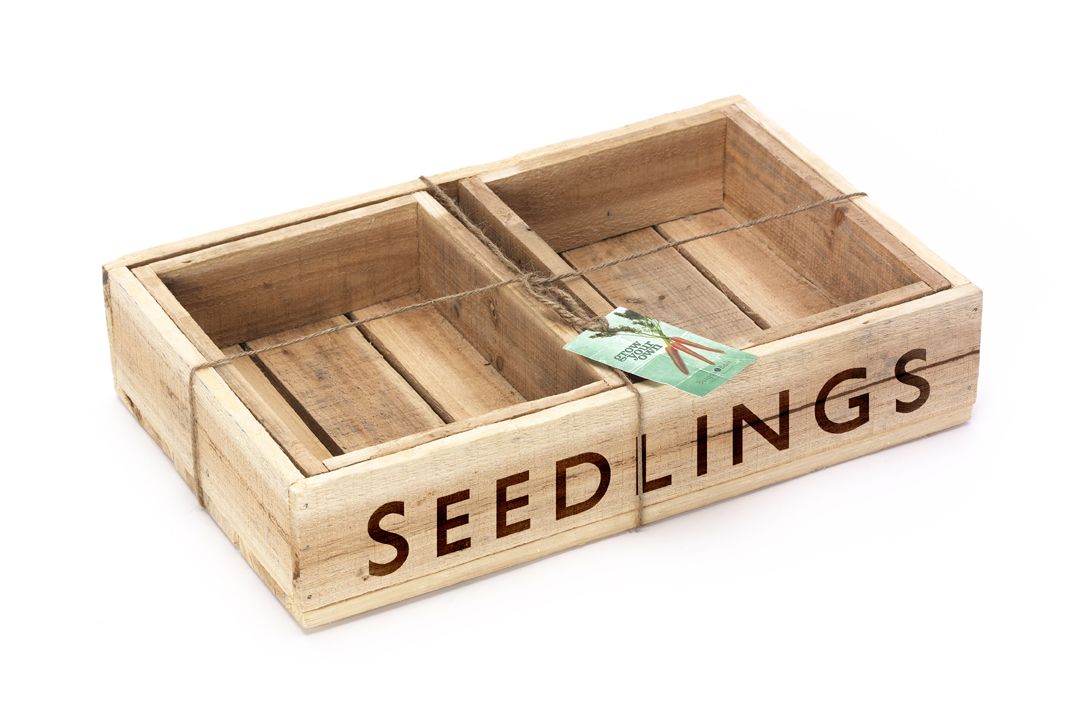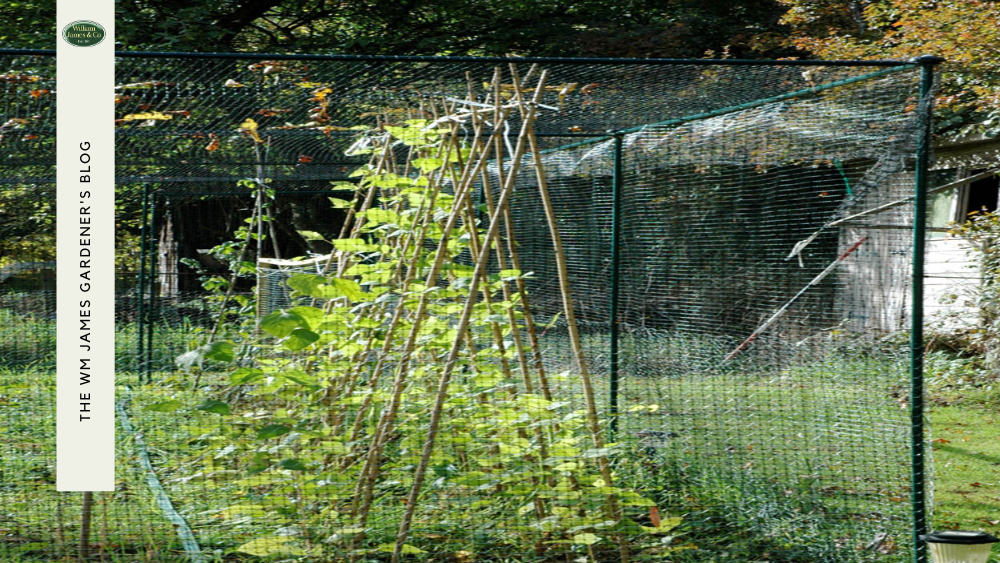We use cookies to make your experience better. To comply with the new e-Privacy directive, we need to ask for your consent to set the cookies. Learn more.
15 Garden Vegetable Protection Tips for Budding Growers
- Admin
- WM James Gardening Blog
- 31 Jan 2021
-
51views
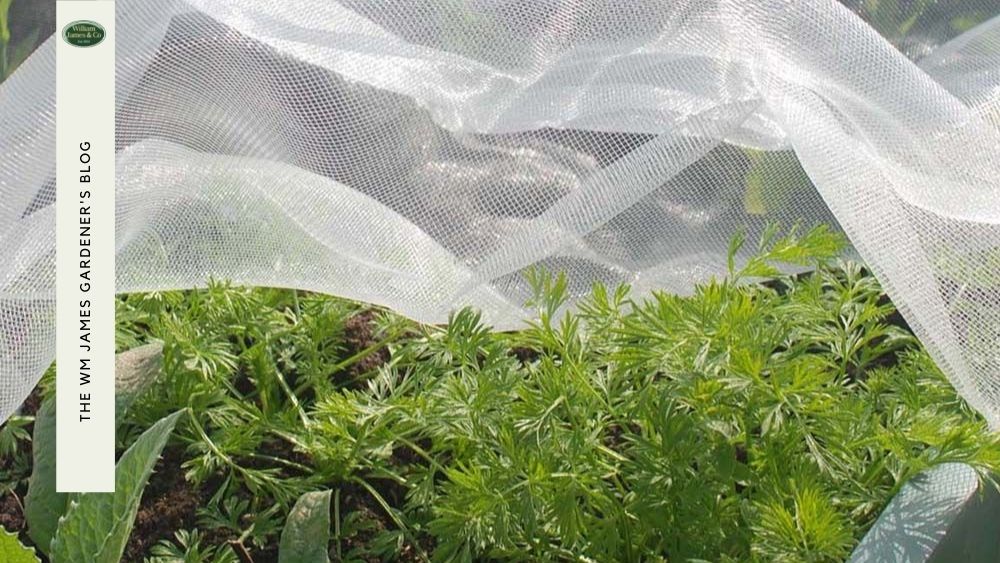
Knowing how to protect a vegetable garden from animals means sanity for the committed grow-your-own enthusiast. Un-surprisingly, the threats to your veg come in many shapes and forms. Birds, insects, bugs and pests can be at the top of the list of spoilers.
The climate and weather too can be ruinous. Protecting plants from frost, rain and too much sun are all important elements that you need to understand, as well as your soil chemistry and location! Garden vegetable protection requires a long list of strategies and tactics but we're here to help! In this post, we'll walk you through each of our tips and how they will help you protect your garden
Fruit Cages
Fruit cages are metal structures, covered with netting that almost guarantee fruit and vegetable protection. Experienced growers across the UK use all types of fruit cages to protect their precious crops. Cages range from low-cages for small vegetables and leafy greens to walk-in fruit cages for fruit trees and bushes.
Buying a fruit cage will ensure you're protecting fruit and vegetables from birds and animals but you also need to think about how you will use it. It’s important to make a fruit cage tall enough so your fruit bushes and small trees can grow to full height for instance. A good height also means you can stand inside to tend the plants which will save you back no-end!
The final consideration is the type fo fruit cage netting you use to cover the metal frame. Fruit cage netting is usually of small-gauge mesh, 15–20mm (1⁄2–3⁄4in), to exclude even the smallest birds. They are perfect for fruit growers who don't want to share their produce with the birds.
Low Vegetable Cages
Garden vegetable protection doesn't always require so much height. Lower the cost with, for example, vegetable cages which are perfect for plants and vegetables that grow to low heights. Examples of these include carrots, cucumbers and lettuce. Vegetable protection is guaranteed against small birds and butterflies, keeping your crop safe and pest free.
Vegetable cages are suitable for use in all types of scenarios. They are regularly used in small gardens, right through to large allotments and smallholdings and are an effective answer to how to protect a vegetable garden from animals.
Insect Netting
Insect netting can protect against all manner of species and provide some protection against birds too. Use it to get fruit and vegetable protection from butterflies, birds and hungry deer.
There’s a range of different mesh sizes depending on the application you intend to use it for. It also comes in various thicknesses and colours. Use it to keep out common garden pests like cabbage root fly, carrot fly, cabbage white butterfly, pea moth, leek moth, cutworm, onion fly, leaf miners and many species of aphids.
Bird Netting
Specialist bird netting is used to prevent birds from nesting or entering certain areas. It’s a cost-effective solution to fruit and garden vegetable protection. Anti bird netting comes in a range of different mesh sizes and strengths. Each is made specifically to protect against different bird species.
Bird netting is perfect for draping over trees or fruit cage frames. Getting the right netting will protect against birds without harming them and, above all, still allow bees to pollinate. Netting manufacturers are worth talking to as they know how to protect a vegetable garden from animals.
Cloches
Cloches retain heat from the ground and create a microclimate. They are a good solution for starting cuttings and protecting seedlings as they germinate. Later in the season cloches also provide a bit of extra for ripening fruit and vegetables. Cucumbers and dwarf French beans grow well under cloche conditions.
When first invented 400 years ago, cloches were made from glass. Now they are often made from rigid transparent plastic. On a miniature scale, cloches perform the same vegetable protection function as greenhouses and polytunnels. Above all, and unlike bigger items used for garden vegetable protection, they are much easier to move around.
Greenhouses
If you have the space and big ambitions, then expanding your microclimate with a greenhouse is a good idea. With more dedicated space, you can grow multiple varieties of fruit and vegetables. Because of the shelter offered by a greenhouse growing plants that wouldn't usually survive becomes a possibility. Fruit and vegetable protection is guaranteed, so long as you remember to close the door.
Greenhouses are highly efficient at providing light and heat to your plants. You will need to provide the water and fertiliser. It also makes sense to vent the greenhouse to let fresh air in. A physical structure or barrier is ideal in knowing how to protect a vegetable garden from animals
Poly Tunnels
Polytunnels are a flexible alternative to greenhouses for creating the higher temperatures and humidity for year-round growing. Defined as an elongated, polythene covered frame, they can extend the growing season by several weeks.
Similar to cloches and greenhouse, they offer strong vegetable protection. Because they don't need a level base polytunnels are quicker and cheaper to erect. That’s handy if your approach to garden vegetable protection is urgent.
For a walk-in polytunnel you will need a workable height in the middle of a couple of metres. Smaller polytunnels can also work very well at a 45 or 60cm height to offer localised garden vegetable protection.
Humane Pest Control
Pests are the most common vegetable and fruit garden problem. There are often many different kinds to deal with. Smaller species can be dealt with using fine insect mesh that will prevent flies, beetles and snails from getting anywhere near your crop. For a belt and braces approach, try some copper slug bands. Slug traps too can be a helpful backstop in garden vegetable protection.
But how do you protect a vegetable garden from animals like moles? If moles are active in your garden then don't worry, they don't eat plants. Though they do disturb plant roots, mainly they eat insects found in the soil. The humane way to deter them is to try and remove their food source.
Indoor Vegetable Growing
If the outdoors contains too many hazards bring things inside as many vegetables can be grown indoors. Growing vegetables indoors is convenient, easy and saves you money off supermarket produce.
All you need for indoor vegetable growing is to ensure the right environment for your micro-garden. It also means you can control the elements more closely. That includes heat and light, and the soil make up, which is vital to plant success.
Seasonal Crop Rotation
Assuming your growth plans are generally bearing fruit, what can you do to ensure success season after season? Plants are sensitive to many things, and one way to protect your annual productivity is seasonal crop rotation.
On top of all the other garden vegetable protection measures, this one plays the long game. In essence, it’s a way for you to reduce disease and soil malnutrition by planting something different in each section of your garden.
The three specific benefits of crop rotation are maintaining and improving soil fertility, better control of weeds, and reducing pests and disease.
Cold Frames
Just when you thought we had covered all how you can do garden vegetable protection, here’s another. Gardeners are practical and innovative folk, and the timber cold frame is simple and effective and attractive. Use them alongside a greenhouse or polytunnel to free up space.
Like the greenhouse and polytunnel the cold frame helps protect against the more challenging weather like frost, wind and rain. This protection enables plants to continue growing later into the year and effectively extends the growing season.
Weed Control Barriers
Weeds are sometimes described as plants in the wrong place. Clearing weeds and keeping them at bay is a constant battle in pursuit of garden vegetable protection. A weed control barrier is a good idea for a new area of your garden or planting for the forthcoming season. Essentially a weed barrier is a geotextile cloth with a meshed texture similar to burlap.
Once the site is cleared of weeds lay the fabric down with slits, cut into it where the plants will be dug in. Alternatively you can plant first and lay the fabric over the top, working the slit down over the plant. Scattering mulch over the top of the barrier will help retain moisture, and it will look better.
Strategic Planting
Harnessing Mother Nature’s power is a smart move for garden vegetable protection and eliminating pests. Because every pest has a predator, strategic planting can reduce the impact of damaging creatures on your fruit and vegetables. The objective is to grow plants, other vegetables or flowers, that attract the right insects to keep the bad bugs away.
A useful guide is to think of the three ‘P’s’ of beneficial insects: pollinators, predators and parasites. Pollinators will fertilise flowers, which increases the productivity of crops ranging from apples to courgettes. Predators, such as ladybirds, consume pest insects as food. Fruit cages can even help to keep foxes at bay. Parasites use pests as breeding grounds for their young.
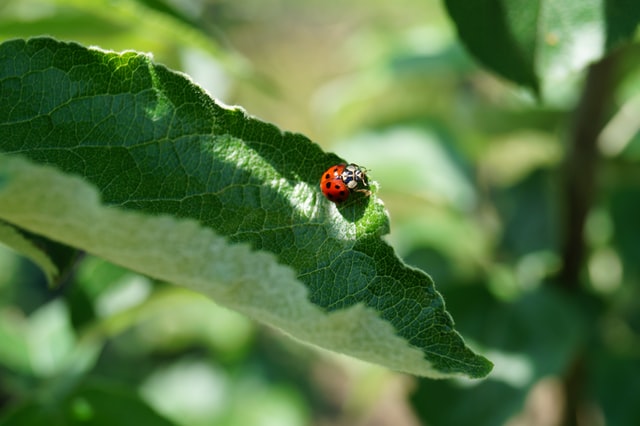
Bird Scarers
Birds are always foraging for food, and your plants and seeds will make a tasty meal. While birds are most welcome in the garden, sometimes, you might need to keep them at bay. The RSPB guide to bird scaring includes legal guidance. It begins with a caveat about them understanding why it may sometimes be appropriate.
Of course, the classic bird scarer is the scarecrow and has been used for centuries to pursue vegetable protection. Other visual scaring techniques include flying predator kites from poles to mimic a hovering hawk.
There are innumerable audible bird scarers from benign acoustic deterrents to propane cannons, often used by farmers. The challenge is that birds often get used to deterrents. Witness birds perching on a scarecrow.
Organic Pesticides
We grow our vegetables because we like the quality and want to know what they contain. Keeping our vegetables organic and free from toxic chemicals is often top of the list for vegetable protection.
But it’s not always so simple as many products on the market are not as safe as they might be. Natural homemade pesticides are often cheaper and safer than many products you can buy. These are most likely to guarantee you the safest alternative to chemical formulas.
In Summary
In conclusion, knowing how to protect a vegetable garden from animals is a big subject, and for budding growers, we hope this has been a helpful introduction.

